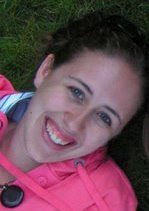For anyone who has ever considered taking this course, I highly recommend it! The class time is mainly a tutorial for the software, but it is well thought-out and I can not wait to use it in a class room :o)
I haven't really written about my experience with the NASA 3D View course in the detail I wanted to, but here are highlights from the rest of the course.
ATMOSPHERE UNIT:
Students learn about fronts using NOAA satellite images and activities include weather forcasting. A great opportunity for kids to learn about practical applications.
LITHOSPHERE UNIT:
The highlight of this unit was the discovery of plates and fault lines by students. Students are provided with satellite images of the most recent volcanic and earthquake activity. They can observe this activity is clearly grouped over the fault lines. There is a cardboard & sponge activity where students can discover what happens when heavier and lighter plates collide. Two sponges and two cardboard rectangles are placed in a shallow tray filled with water. Students apply pressure from the outer two materials and observe what happens when the sponges and cardboard are pushed together!
HYDROSPHERE UNIT:
This unit had a lot of misconceptions -- mostly that water underground is like a huge lake or river. One of the animations in the unit made it very clear how ground water moves through the dirt and rocks and into rivers and lakes. The animations are really fun and it is clear what is happening.
BIOSPHERE UNIT:
The initial misconception dealt with in this unit is what classifies a living thing. Many of the 3D images in the unit are of ecosystems where students can identify living and non-living things. Many opportunities to right these misconceptions. Another neat animation is a 3D tour of an animal and plant cell! Students discover what each part of the cell is responsible for.




No comments:
Post a Comment